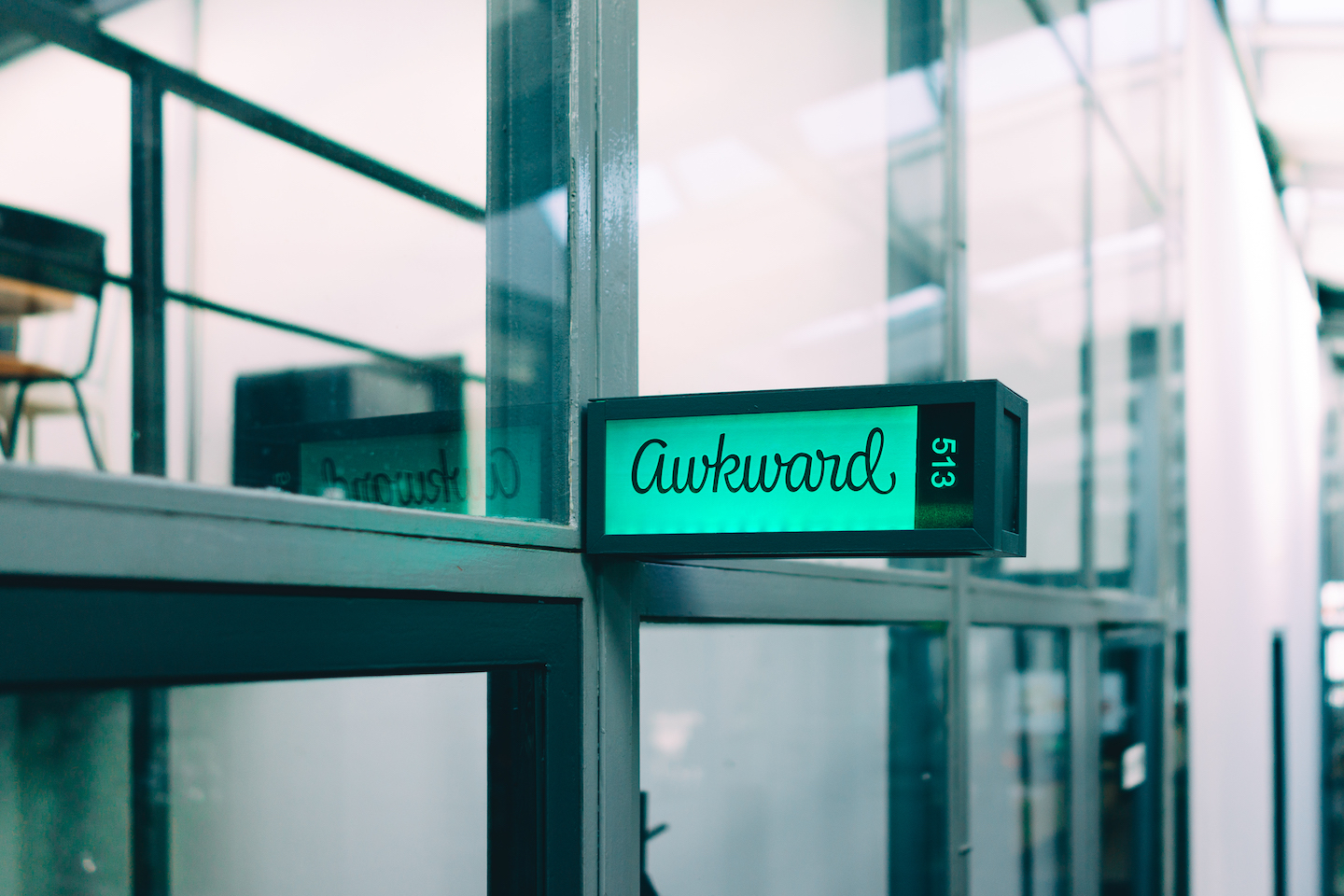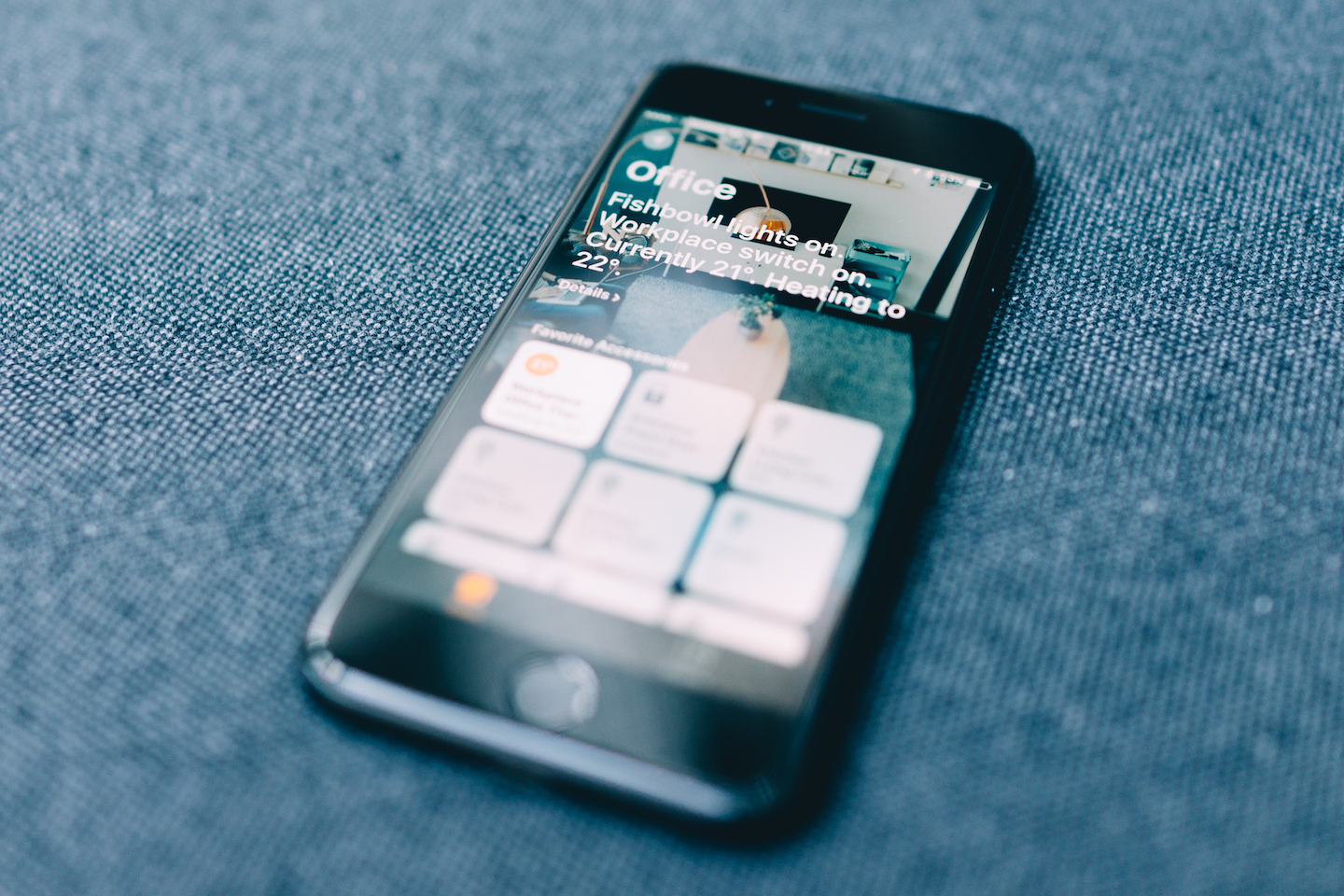Awkward is located in an industrial building in the harbour of Rotterdam. Once a departure hall for sailors and dockworkers setting coarse to where ever. It was later renovated for use as a business complex. When I joined the team, the big blocks of concrete mixed with metal beams were the first thing that I noticed. For a ‘hacker’ like me, it felt like a playground. Time to make some alterations.
One of the remains of the old times are sign-boxes, meant to indicate what the space was used for. The signs were kept during renovations and used to indicate the company located in that space. Our sign was just a simple piece of paper with the Awkward logo, but we recently decided to spice things up. We organized a hackathon with office improvements as its theme. One idea was to make a new door sign. We’d engrave a piece of acrylic glass with our logo and put a Philips Hue bulb behind it. However, when I heard of the idea, I immediately thought of how horrible it would look. Simply because the bulb would take up 50% of the sign and there wasn’t any power near the sign yet.
Instead I wanted to use an LED strip beneath the glass for a much better look and because the LED strip was RGB we could also control the color of it. I went to work on getting components. Someone still had an LED strip lying around and the only other thing I would need to make it work would be an Arduino. While picking the components, inspiration came to me to make the new sign changeable using an app and maybe even externally from our website.

During a previous office improvement hackathon, we switched our thermostat for a smart thermostat and changed some lights for color changing Philips Hue bulbs. However, after installing we soon realized nobody was using the features to control the thermostat or the lights, which we soon just used as regular light bulbs.
Later in 2014, we got the idea to make an app to combine all these home automation systems into one app, however the app never came to be because of time. Fast forward to 2016 and Apple finally announced Home: the app that integrates with HomeKit. One problem, the devices we have in the office are not supported by HomeKit. We were able to solve this with an open source project: Homebridge. A Node application that runs on a machine in the local network. We connected the thermostat, lights and even the charger for all our test devices to this Homebridge and made them available in the Home App.

Now everyone in the office has been invited to our new “home” using the Home App. People can set the thermostat to heat before they get to the office, change the color of the lights during the dark winter nights or make sure they turned off the lights when they’ve left.
All the offices in our business complex share the same intercom to control the front door. Everyone in the office has a key to the front door, but as the hacky bunch of nerds that we are, we wanted something different. So, someone from the Hackerspace Pixelbar found a way to hack the intercom and unlock the front door using a simple Arduino and a relais. That way we could just open a URL in the browser and open the door. Meaning we’d never have to leave our comfy desks for a ringing doorbell.
But wait, opening a URL is nice, but how about mobile? What if we arrive at the office, but forgot the key to the front door? We’d have to open a browser and open the URL on our phone. Why not make an app for that? Well, we did. Soon the Awkward app was born. Using a simple “slide to unlock”, we can now unlock the door and enter in a second.
We extended the app as the iOS ecosystem grew. We added a widget for quick access, an Apple Watch app to unlock the door from our wrists and even notifications based on iBeacons, so that you don’t even have to open the app to unlock the door. We even have the door in the Home App using HomeKit and using the HomeKit automation we can turn on the lights as soon as someone opens the door!
Wait a minute. What if the bell rang, but nobody heard it because we’re all listening to death metal?! During our latest hackathon we wanted to build a notification system for the doorbell, but we didn’t figure out how to get a signal. We took a different approach. We placed a microphone on top of the actual buzzer. We now receive Slack notifications whenever someone rings our doorbell.
The hacking at our office still continues. Now that we know when the bell is ringing, we’re planning to make our lightbox “smart” and let it flash for a few minutes so people know where they need to be. The HomeKit Home App also has a flaw we need to fix. If you have more than one home in the Home App, you need to manually switch to the office. We want to solve this by making the Awkward app switch the home based iBeacons we’re placing in and around the office.
To us, hacking is part of what we do. We tinker, we build, we create. It’s a fun release and sometimes great ideas become reality. Until the next hackathon!